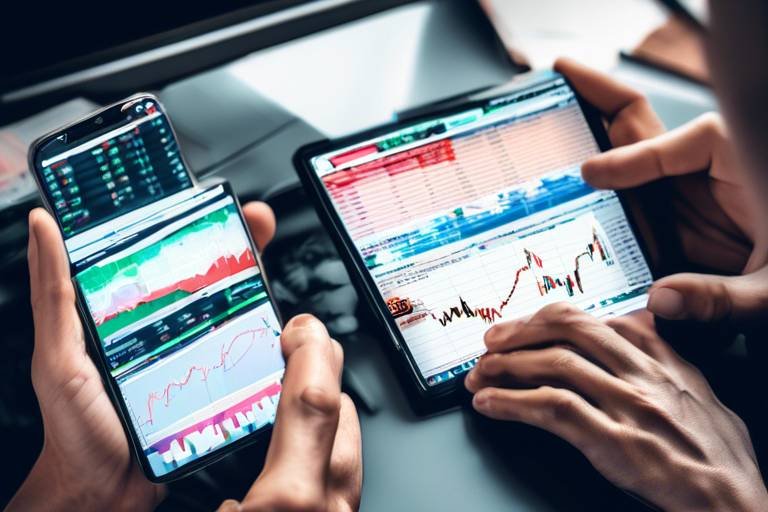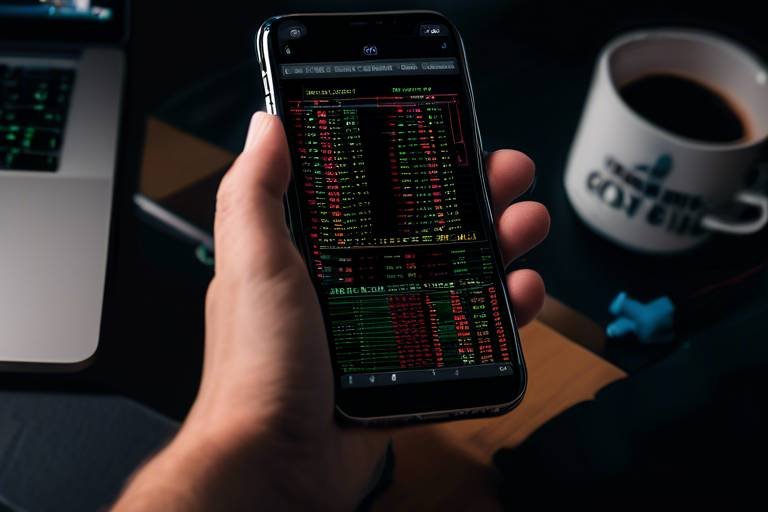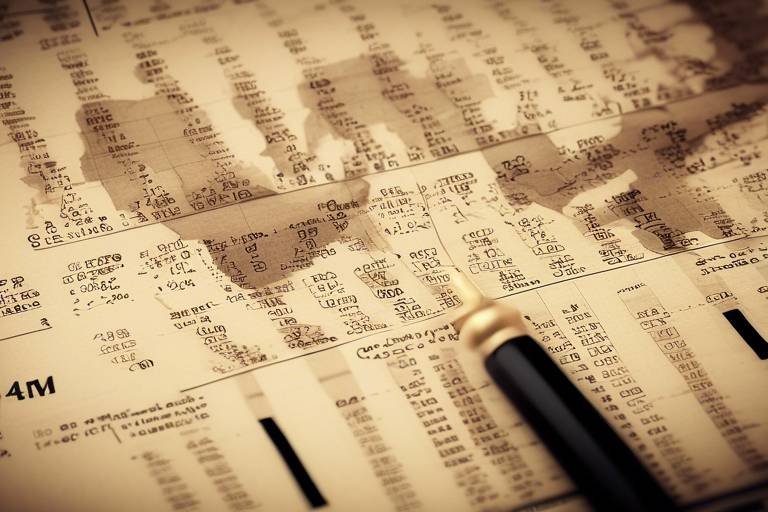Trading with a Small Account - Strategies That Work
Trading with a small account can feel like trying to navigate a ship through a stormy sea—challenging, yet filled with opportunities for those who know how to steer. Many traders assume that a limited budget restricts their potential for success, but that couldn’t be further from the truth. In fact, trading with a small account can teach invaluable lessons about discipline, risk management, and strategic planning. This article is designed to equip you with effective strategies that can help you thrive in the trading world, even if your capital is limited. We'll explore essential aspects like risk management, trading psychology, and practical tips that can help you maximize your returns without putting your hard-earned money at excessive risk.
When it comes to trading with a small account, understanding the unique challenges and opportunities is crucial. Unlike traders with larger accounts who can afford to take more significant risks, small account traders must be more strategic and disciplined. This often means making smarter decisions about trade entries, exits, and position sizes. Small account trading is not just about the amount of capital you have; it's about how you manage that capital effectively. The key lies in focusing on consistent, small gains rather than aiming for massive profits, which can often lead to reckless decisions.
Effective risk management is the cornerstone of trading success, especially for those with small accounts. Without a solid risk management strategy, even the most promising trades can lead to devastating losses. Here are some techniques to help you minimize losses while maximizing potential gains:
Position sizing is a critical component of risk management, determining how much of your capital to risk on a single trade. It’s like deciding how much fuel to put in your car before a long journey; too little, and you might not make it to your destination; too much, and you’re just wasting resources. Here are two popular methods for calculating position sizes:
Using a fixed dollar amount for each trade can help you maintain discipline. By allocating a specific dollar amount to each trade, you can effectively manage risk without overexposing your small account. For example, if your account balance is $1,000, you might decide to risk $20 per trade. This approach keeps your emotions in check and encourages a systematic trading approach.
Another common strategy is to risk a percentage of your account balance. This method adjusts your position sizes according to fluctuations in your account, promoting consistent risk management. For instance, if you decide to risk 2% of your account on each trade, with a $1,000 balance, you would risk $20. If your account grows to $1,200, your risk per trade would increase to $24. This dynamic approach helps protect your capital during downturns while allowing for growth during profitable periods.
Leverage can be a double-edged sword; it amplifies gains but also increases risk. For small account traders, using leverage wisely is essential. Think of leverage as a powerful tool that can help you build your trading portfolio, but one that requires careful handling. By employing a conservative approach to leverage, you can enhance profitability without exposing yourself to excessive risk. It's important to understand the risks involved and to use leverage sparingly, especially when your capital is limited.
Choosing the right markets is vital for small account success. Not all markets are created equal, and some offer better opportunities for traders with limited capital. Here are a couple of asset classes worth considering:
Forex trading is an excellent option for small account traders due to its high liquidity and low capital requirements. With the ability to trade on margin, forex allows traders to control larger positions with a smaller amount of capital. This can lead to substantial returns if managed correctly. However, it's crucial to have a solid understanding of forex market dynamics and to develop strategies tailored for limited funds.
Options trading can also provide unique opportunities for small account traders. By utilizing options strategies, traders can leverage their small investments effectively. Options allow for various strategies, from conservative to aggressive, enabling traders to tailor their approach based on risk tolerance and market conditions.
A solid trading plan is essential for success, especially when trading with a small account. It acts as your roadmap, guiding you through the ups and downs of the trading journey. Key components of an effective trading plan include:
Clearly defined goals help traders stay focused. Setting realistic and achievable trading objectives is vital for small accounts. Instead of aiming for unrealistic profits, focus on consistent growth and skill development.
Backtesting allows traders to evaluate strategies before live trading. This process helps ensure that your trading methods are viable and can lead to positive outcomes for small accounts.
Trading psychology plays a significant role in success. The mental challenges faced by small account traders can be daunting, but with the right strategies, they can be overcome. Managing emotions like fear and greed is crucial for making sound trading decisions.
Emotional control is vital in trading. Techniques such as mindfulness and self-reflection can help traders maintain a clear perspective, allowing them to make decisions based on logic rather than emotion.
Discipline is key to long-term success. Sticking to your trading plan and avoiding impulsive decisions is crucial when trading with a small account. Remind yourself that trading is a marathon, not a sprint, and maintaining discipline will pay off in the long run.
- Can I really make money trading with a small account? Yes! With the right strategies and discipline, you can achieve consistent profits even with limited capital.
- What is the best market for small account trading? Forex and options trading are often recommended due to their low capital requirements and high liquidity.
- How much should I risk per trade? A common rule is to risk no more than 1-2% of your account balance on a single trade.
- Is leverage safe for small account traders? Leverage can amplify gains but also increase risk. Use it cautiously and understand the potential downsides.
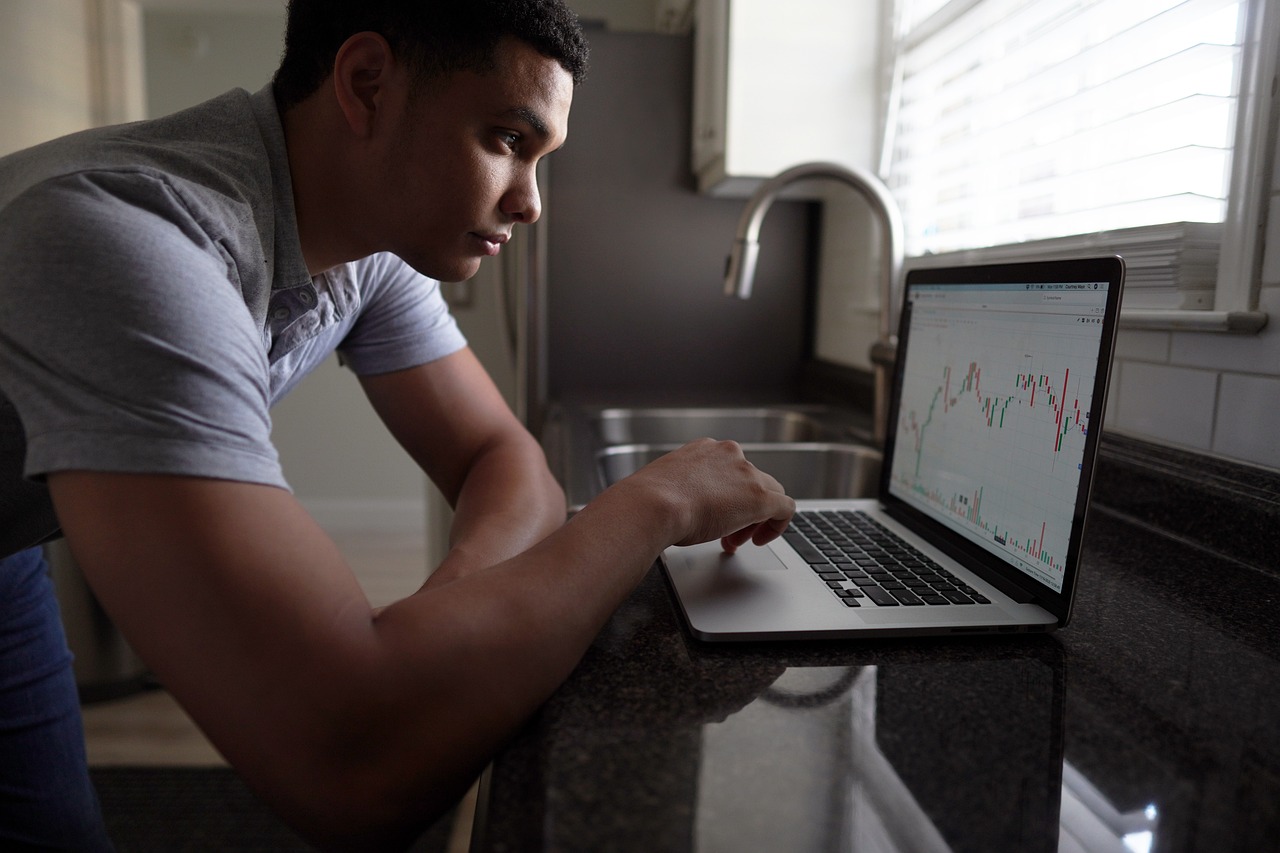
Understanding Small Account Trading
Trading with a small account can feel like navigating a tightrope—one misstep, and you could be in for a fall. But don't let the limited capital discourage you! In fact, small account trading presents unique challenges that can actually serve as a stepping stone to developing robust trading skills. Unlike trading with larger accounts, where you might have the luxury of making bigger trades and absorbing losses more comfortably, small account trading forces you to be more strategic and disciplined. It's about making every penny count!
When you’re working with a small account, it’s essential to understand that the dynamics of trading change significantly. For instance, your potential gains might be smaller, but so are your risks. This creates a fascinating paradox: the smaller your account, the more you need to focus on the fundamentals of trading, such as risk management and emotional discipline. Think of it this way: trading with a small account is like being a chef in a tiny kitchen. You have limited resources, but with creativity and skill, you can whip up something amazing!
Moreover, small account trading teaches you the importance of position sizing and leverage. You can't afford to risk large sums on a single trade, so you learn to calculate your position sizes carefully. This is where techniques like risking a fixed dollar amount or a percentage of your account balance come into play. For instance, if your account is $1,000, risking 1% per trade means you can only risk $10. This limitation forces you to think critically about each trade you make, honing your decision-making skills over time.
Additionally, small account traders often find themselves more engaged in the market. With fewer resources, you’re likely to be more attentive to market movements, news events, and trading signals. This heightened awareness can lead to better trading decisions and, ultimately, improved performance. However, it’s crucial to remember that while the potential for growth exists, the risks are ever-present. Therefore, understanding the market landscape and choosing the right trading instruments is vital.
In essence, small account trading is a journey of learning and growth. It challenges you to refine your strategies, manage your emotions, and develop a disciplined trading mindset. So, whether you're just starting out or looking to enhance your trading prowess, embracing the nuances of small account trading can lead you to success in the long run. Ready to dive deeper into the world of small account trading? Let’s explore effective risk management techniques next!

Risk Management Techniques
When it comes to trading with a small account, effective risk management is not just a suggestion—it's a necessity. The stakes can feel incredibly high, and the margin for error is often razor-thin. Imagine walking a tightrope; one misstep could lead to a significant loss. Therefore, understanding and implementing risk management techniques can be the difference between success and failure. In this section, we'll explore various strategies to help you minimize losses while maximizing your potential gains.
One of the first steps in risk management is determining how much of your capital you are willing to risk on each trade. This is often referred to as position sizing. It’s crucial to find a balance that aligns with your risk tolerance and account size. For instance, if you're trading a small account, risking a large percentage of your capital on a single trade can be devastating. Instead, consider these two common methods:
Position sizing is essential for maintaining discipline in your trading approach. There are two prevalent methods that traders often use:
Using a fixed dollar amount for each trade can help you maintain a level of discipline that is often hard to achieve. For example, if you decide to risk $50 on every trade, you can make consistent decisions without letting emotions dictate your actions. This approach allows you to manage risk effectively and ensures that even a series of losses won't wipe out your account.
Another popular method is risking a percentage of your account balance. This strategy is particularly beneficial for small account traders because it adjusts your position size according to your account fluctuations. For instance, if you have a $1,000 account and decide to risk 2% per trade, you would be risking $20. If your account grows to $1,200, your risk per trade would increase to $24. This method promotes consistent risk management and helps you stay aligned with your overall trading strategy.
Additionally, while leverage can amplify your gains, it can also increase your risks significantly. Therefore, utilizing leverage wisely is paramount when trading with a small account. It’s like using a magnifying glass; it can enhance what you’re focusing on, but if misused, it can lead to severe damage. Always be aware of how much leverage you’re using and ensure it aligns with your risk management strategies.
In summary, effective risk management techniques such as position sizing and judicious use of leverage are critical for small account traders. By maintaining discipline and adhering to these strategies, you can protect your capital while maximizing your potential for growth. Remember, trading is not just about making profits; it's about managing risks wisely to ensure long-term success.
- What is the best risk management strategy for small accounts? The best strategy often involves a combination of fixed dollar amounts and percentage-based risk management to maintain consistency and discipline.
- How much of my account should I risk on each trade? Most experts recommend risking no more than 1-2% of your account balance on any single trade.
- Can I use leverage with a small account? Yes, but it should be used cautiously. Leverage can amplify both gains and losses, so understanding your limits is crucial.

Position Sizing
When it comes to trading, especially with a small account, is one of the most critical aspects to master. It's not just about how much you can potentially earn; it's about how much you're willing to risk on any given trade. Imagine you're in a race; if you start too fast, you might burn out before the finish line. Similarly, in trading, if you risk too much too soon, you could jeopardize your entire account. So, how do you determine the right amount to risk on each trade? Let's explore some effective methods.
One of the simplest yet effective ways to calculate position size is through the fixed dollar amount method. This involves deciding on a specific dollar amount that you are comfortable risking on each trade. For instance, if your account balance is $1,000 and you decide to risk $20 per trade, you are maintaining a disciplined approach that prevents significant losses. This method is particularly beneficial for traders who may struggle with emotional decision-making, as it provides a clear guideline to follow.
Another popular strategy is to risk a percentage of your account balance. This method adjusts your position size based on your current account balance, which is especially useful for small account traders. For example, if you set your risk at 2% of your account balance, and your account grows to $1,200, your risk per trade would increase to $24. This approach not only helps in managing risk but also allows for growth in your trading strategy without exposing yourself to excessive risk. Below is a simple table illustrating how this strategy works:
| Account Balance | Risk Percentage | Risk Amount |
|---|---|---|
| $1,000 | 2% | $20 |
| $1,200 | 2% | $24 |
| $800 | 2% | $16 |
In addition to these methods, it’s crucial to consider the stop-loss level when determining your position size. A stop-loss is a predetermined point at which you will exit a losing trade to prevent further losses. By knowing where your stop-loss will be placed, you can calculate how much of your capital you are risking per trade. For instance, if you’re trading a stock priced at $50 and you set a stop-loss at $48, you are risking $2 per share. If you've decided to risk $20 on that trade, you can purchase 10 shares. This relationship between your stop-loss, risk per trade, and position size is fundamental to effective risk management.
Ultimately, mastering position sizing can be the difference between success and failure in trading with a small account. By employing these strategies, you not only protect your capital but also position yourself for potential growth. Remember, trading is a marathon, not a sprint. So, take your time, calculate wisely, and always keep your emotions in check.
- What is position sizing? Position sizing refers to the amount of capital you allocate to a particular trade, which is crucial for managing risk.
- Why is position sizing important for small accounts? It helps prevent significant losses that could wipe out a small account, enabling traders to stay in the game longer.
- How can I determine my position size? You can use methods like fixed dollar amounts or a percentage of your account balance, factoring in your stop-loss levels.

Fixed Dollar Amount
Using a for each trade is a strategy that can significantly enhance your trading discipline, especially when managing a small account. This approach revolves around the principle of maintaining consistency in your trading, irrespective of the fluctuations in your account balance. By risking a predetermined dollar amount on each trade, you create a structured approach to trading that helps in minimizing emotional decision-making.
Imagine you're at a carnival, and you have a limited number of tickets to spend on games. If you allocate a specific number of tickets for each game, you're less likely to overspend and can enjoy the experience without the anxiety of running out of tickets. Similarly, by setting a fixed dollar amount for your trades, you can trade with confidence, knowing that you're not exposing your entire account to risk.
For instance, if your trading account has a balance of $1,000, you might decide to risk $20 on each trade. This means that regardless of how your trades perform, you will only lose $20 at most, allowing you to stay in the game longer and avoid catastrophic losses. This fixed amount can be adjusted as your account grows or shrinks, but the key is to stick to this predetermined risk.
Here’s a simple table to illustrate how a fixed dollar amount strategy can work over a series of trades:
| Trade Number | Account Balance | Risked Amount | Outcome | New Account Balance |
|---|---|---|---|---|
| 1 | $1,000 | $20 | Win | $1,020 |
| 2 | $1,020 | $20 | Loss | $1,000 |
| 3 | $1,000 | $20 | Win | $1,020 |
| 4 | $1,020 | $20 | Win | $1,040 |
As you can see from the table, even with wins and losses, the fixed dollar amount approach allows for a steady management of risk and helps in keeping emotions at bay. This method also encourages traders to focus on their trading strategy rather than getting distracted by the ups and downs of their account balance. By adopting this disciplined approach, you can cultivate a more sustainable trading practice that is less likely to lead to impulsive decisions.
In conclusion, the fixed dollar amount strategy is not just about protecting your capital; it's about fostering a mindset geared towards long-term success. By committing to this method, you can navigate the tumultuous waters of trading with a small account, ensuring that each trade is a calculated step towards your financial goals.

Percentage of Account Balance
When it comes to trading with a small account, one of the most effective strategies is to risk a percentage of your account balance on each trade. This approach not only helps in managing your risk effectively but also allows you to adapt to the fluctuations in your account size. Imagine your trading account as a balloon; if you inflate it too quickly (by risking too much), it might pop, leading to significant losses. However, if you manage your inflation gradually and carefully, you can keep that balloon afloat for much longer.
By adopting a percentage-based risk strategy, you establish a dynamic approach to position sizing. For instance, if you decide to risk 2% of your account on each trade, your position size will automatically adjust as your account grows or shrinks. This method ensures that you are not overexposed during losing streaks and allows you to capitalize on gains when the market is favorable.
To illustrate how this works, let’s consider an example. If your trading account has a balance of $1,000 and you choose to risk 2% per trade, you would be risking $20 on that particular trade. If your account grows to $1,500 after a series of successful trades, your new risk amount would be $30 (2% of $1,500). Conversely, if your account dips to $800, your risk would decrease to $16. This adaptability is crucial for small account traders, as it helps in maintaining a sustainable trading practice.
Here’s a simple table to summarize the concept:
| Account Balance | Risk Percentage | Risk Amount |
|---|---|---|
| $1,000 | 2% | $20 |
| $1,500 | 2% | $30 |
| $800 | 2% | $16 |
In conclusion, utilizing a percentage of your account balance for risk management is a powerful strategy for small account traders. It not only helps in mitigating potential losses but also promotes a disciplined trading approach. Remember, trading is a marathon, not a sprint; by managing your risks wisely, you can ensure that you remain in the game for the long haul.
- What is the best percentage to risk per trade? Generally, risking between 1% to 3% of your account balance is advisable for most traders.
- Can I adjust my risk percentage based on market conditions? Yes, many traders adjust their risk percentage based on their confidence level and market volatility.
- How can I track my account balance and risk percentage? You can use trading journals or trading platforms that provide analytics to keep track of your performance and risk management.

Utilizing Leverage Wisely
When it comes to trading with a small account, the concept of leverage can feel like a double-edged sword. On one hand, it offers the tantalizing possibility of magnifying gains, but on the other, it can just as easily amplify losses. So, how do you navigate this tricky terrain without falling into the pitfalls that so many traders face? The key lies in understanding how to use leverage wisely and strategically.
First, it's essential to grasp what leverage actually means in the trading world. Simply put, leverage allows you to control a larger position than your actual capital would typically permit. For instance, if you have a leverage ratio of 1:100, you can control $100,000 worth of assets with just $1,000 of your own money. Sounds amazing, right? But here’s the catch: while your profits can skyrocket, so can your losses. That’s why it’s crucial to apply leverage judiciously.
One effective strategy is to limit your leverage to a level that aligns with your risk tolerance. A common recommendation for small account traders is to use a leverage ratio of no more than 1:10 or 1:20. This approach helps to strike a balance between potential gains and manageable risk. By doing so, you can still enjoy the benefits of leverage without exposing yourself to catastrophic losses.
Another aspect to consider is the type of market you are trading in. Different markets have different volatility levels, which can affect how leverage impacts your trades. For example, the forex market is known for its high liquidity and relatively lower volatility compared to commodities or stocks. This makes it a more suitable environment for using leverage, particularly for those with smaller accounts. However, always remember that even in the forex market, significant price swings can occur, so caution is key.
Additionally, employing stop-loss orders is a smart way to manage risk when using leverage. A stop-loss order automatically sells your position at a predetermined price, limiting your potential losses. This tool becomes even more critical when you're leveraging your trades, as it helps to safeguard your capital from unexpected market movements. Think of it like wearing a seatbelt while driving—just because you’re confident in your skills doesn’t mean you shouldn’t take precautions.
Lastly, it's crucial to maintain a long-term perspective. While leverage can create the illusion of quick profits, the reality is that trading is a marathon, not a sprint. By focusing on consistent, incremental gains rather than chasing after massive returns, you can build a sustainable trading strategy that works for your small account. Remember, slow and steady often wins the race in the world of trading.
In summary, utilizing leverage wisely involves understanding its mechanics, limiting your exposure, choosing the right markets, employing protective measures like stop-loss orders, and maintaining a long-term outlook. By adopting these strategies, small account traders can harness the power of leverage while minimizing the risks associated with it.
- What is leverage in trading? Leverage allows traders to control a larger position than their actual investment, amplifying both potential gains and losses.
- How much leverage should I use with a small account? It's generally recommended to use a leverage ratio of no more than 1:10 or 1:20 to manage risk effectively.
- What is a stop-loss order? A stop-loss order is a tool that automatically sells your position at a specified price to limit potential losses.
- Are there markets where leverage is more suitable? Yes, the forex market is often considered more suitable for leveraging due to its high liquidity and lower volatility.
- How can I maintain a long-term perspective in trading? Focus on consistent, incremental gains and avoid chasing after quick profits to build a sustainable trading strategy.

Choosing the Right Markets
When it comes to trading with a small account, one of the most crucial decisions you’ll make is choosing the right markets to invest in. With limited capital, it's essential to select markets that not only align with your risk tolerance but also offer the potential for significant returns. Think of it like choosing the right playground for your investment swings; some playgrounds are filled with fun slides and swings, while others may have hidden dangers. Understanding the characteristics of different markets can help you avoid costly mistakes and maximize your potential gains.
One of the most appealing markets for small account traders is the Forex market. Why? Well, the Forex market is known for its high liquidity, which means you can enter and exit trades with ease. Additionally, the capital requirements are low, allowing you to start trading with a smaller amount. Imagine having the ability to trade currencies from all over the world at your fingertips! This accessibility makes Forex an attractive option for those with limited funds.
However, Forex trading is not without its challenges. The market can be incredibly volatile, and prices can swing dramatically in a short period. Therefore, it’s essential to have a solid understanding of technical analysis and market trends. A well-researched strategy can help you navigate this fast-paced environment effectively. For example, utilizing tools like moving averages or support and resistance levels can provide valuable insights into potential price movements.
Another option worth considering is options trading. This market allows traders to leverage their small investments significantly. Options can be a powerful tool, enabling you to control a larger position with a smaller amount of capital. However, they come with their own complexities and risks. It’s like having a magic wand that can multiply your returns, but if you don’t know how to wield it correctly, it can backfire. Understanding the different types of options strategies, such as covered calls or protective puts, can enhance your trading approach.
Here’s a quick comparison of the two markets:
| Market | Liquidity | Capital Requirements | Volatility | Complexity |
|---|---|---|---|---|
| Forex | High | Low | High | Moderate |
| Options | Moderate | Varies | Varies | High |
In addition to Forex and options, consider exploring stock trading. While it generally requires a larger capital base, there are many penny stocks and ETFs that allow traders to get started with minimal investment. These markets can be less volatile than Forex and may offer more stability, making them a suitable choice for those who prefer a more conservative approach. However, it’s vital to conduct thorough research into the companies or funds you plan to invest in. Think of it like a first date; you wouldn’t just jump in without knowing a bit about the person, right?
Ultimately, the key to successful trading with a small account is to choose markets that resonate with your trading style and risk appetite. Each market has its unique advantages and challenges, and it’s essential to align your strategies accordingly. By selecting the right markets, you can create a solid foundation for your trading journey, allowing you to grow your small account into something much more significant over time.
- What is the best market for small account trading? The Forex market is often considered the best due to its high liquidity and low capital requirements.
- Can I trade options with a small account? Yes, options trading can be advantageous for small accounts, but it's essential to understand the complexities involved.
- How much capital do I need to start trading stocks? You can start trading penny stocks or ETFs with as little as a few hundred dollars, but always do thorough research.
- What is the importance of risk management in trading? Risk management helps protect your capital and minimizes losses, which is crucial for small account traders.
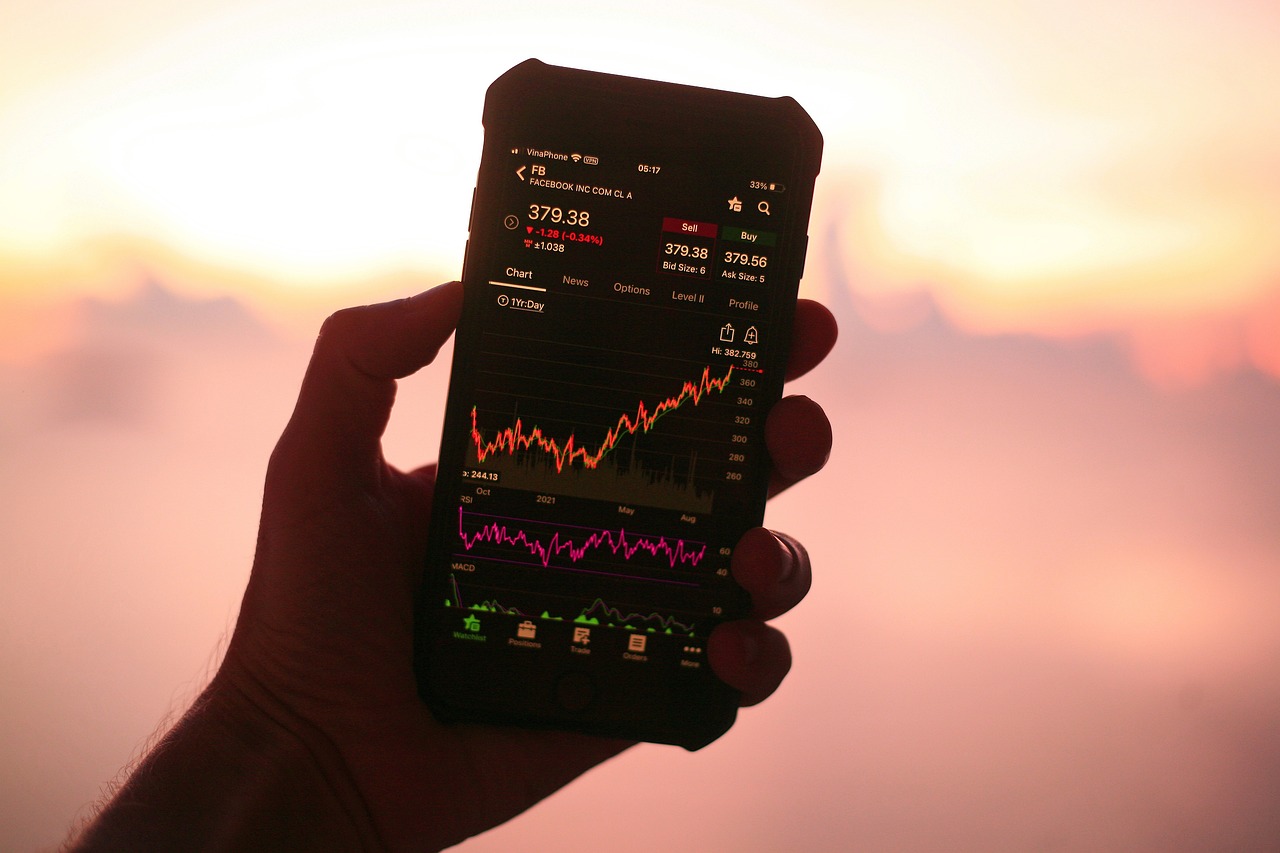
Forex Trading
Forex trading, often referred to as the foreign exchange market or simply FX, is a vibrant and dynamic arena where currencies are bought and sold. For small account traders, this market offers a plethora of opportunities due to its high liquidity and relatively low capital requirements. Imagine stepping onto a bustling marketplace where the currency of every nation is exchanged at lightning speed. That's the essence of forex trading! With just a modest investment, traders can tap into this global financial ecosystem, making it an attractive option for those with limited capital.
One of the key advantages of forex trading for small account holders is the ability to utilize leverage. Leverage allows traders to control a larger position size with a smaller amount of capital. However, while this can amplify profits, it also heightens risk. Therefore, it's crucial to understand how to use leverage wisely. For instance, if you have a small account of $1,000 and use a leverage ratio of 100:1, you can control a position worth $100,000. This can lead to significant gains, but it can also result in substantial losses if trades do not go as planned. Thus, having a solid risk management strategy in place is essential.
When diving into forex trading, small account traders should consider focusing on currency pairs that are known for their volatility and liquidity. Major pairs such as EUR/USD, USD/JPY, and GBP/USD are excellent choices because they typically have tighter spreads and higher trading volumes. This means that traders can enter and exit positions more efficiently, maximizing their potential returns. Moreover, it’s crucial to stay informed about global economic events and news that can impact currency values. For example, changes in interest rates, employment data, and geopolitical events can all influence market movements.
To enhance their trading success, small account traders should adopt specific strategies tailored to the forex market. Here are a few effective approaches:
- Scalping: This strategy involves making numerous trades throughout the day to capture small price movements. It requires quick decision-making and a solid understanding of market dynamics.
- Day Trading: Unlike scalping, day trading involves holding positions for several hours and closing them by the end of the trading day. This approach allows traders to capitalize on intraday price fluctuations.
- Swing Trading: This method focuses on capturing larger price moves over several days or weeks. It requires patience and a good grasp of technical analysis.
In conclusion, forex trading can be a rewarding venture for small account traders, provided they approach it with the right mindset and strategies. By leveraging the unique characteristics of the forex market and employing effective risk management techniques, traders can maximize their chances of success while minimizing potential losses. Remember, the key to thriving in forex trading lies not just in making trades but in understanding the market's intricacies and maintaining discipline in your trading approach.

Options Trading
Options trading can be a game-changer for small account traders looking to maximize their investment potential. Unlike traditional stock trading, where you buy and sell shares outright, options allow you to control a larger amount of stock with a relatively small investment. This leverage can lead to significant profits, but it also comes with its own set of risks. So, how can you navigate this exciting yet complex world of options trading with a small account? Let's dive in!
First and foremost, it's essential to understand the mechanics of options. An option is essentially a contract that gives you the right, but not the obligation, to buy or sell an underlying asset at a predetermined price before a specific expiration date. This means you can speculate on the direction of stock prices without needing to commit a large amount of capital upfront. For small account traders, this can be particularly appealing.
One of the most effective strategies for utilizing options in a small account is the covered call. This strategy involves owning shares of a stock and selling call options against those shares. It allows you to generate income from the option premium, which can help offset any losses if the stock price falls. However, there's a catch: if the stock price rises above the strike price of the call option, you may have to sell your shares at that price, potentially missing out on further gains.
Another popular strategy is the cash-secured put. This involves selling put options on stocks that you would like to own. By doing this, you collect the premium upfront, and if the stock price drops below the strike price, you're obligated to buy the shares at that price. This can be a fantastic way to acquire stocks at a discount while also generating income.
For those looking to dive deeper into options trading, understanding the Greeks is crucial. The Greeks—Delta, Gamma, Theta, and Vega—provide insights into how options prices are affected by various factors, such as changes in the underlying asset's price, time decay, and volatility. Knowing how to interpret these metrics can help you make more informed trading decisions, ultimately enhancing your chances of success.
However, options trading isn't without its challenges. One of the biggest hurdles for small account traders is the time decay associated with options. As the expiration date approaches, the value of an option can decrease significantly, especially if it is out-of-the-money. This means that timing is everything. You need to be aware of when to enter and exit trades to avoid losing your investment.
Moreover, it’s vital to have a solid trading plan in place when venturing into options trading. This plan should outline your goals, risk tolerance, and specific strategies you intend to use. By sticking to this plan, you can maintain discipline and avoid impulsive decisions that could jeopardize your small account.
In conclusion, options trading can offer small account traders unique opportunities to enhance their investment strategies. By leveraging options wisely and implementing effective strategies like covered calls and cash-secured puts, you can potentially grow your account while managing risk. Just remember, education is key! The more you learn about options and their intricacies, the better equipped you'll be to make informed decisions that align with your trading goals.
- What is the best options trading strategy for small accounts?
Strategies like covered calls and cash-secured puts are often recommended for small account traders as they allow for income generation while managing risk. - How much capital do I need to start trading options?
While there is no set amount, starting with at least $500 to $1,000 can provide more flexibility in executing various strategies. - What are the risks involved in options trading?
Options trading carries risks such as time decay and the potential to lose your entire investment if the market moves against you. - Can I trade options with a small account?
Yes, options trading can be suitable for small accounts due to the leverage they provide, but it's crucial to understand the risks involved.

Developing a Trading Plan
When it comes to trading, having a solid plan is like having a roadmap for a long journey. Without it, you might find yourself lost, wandering through the unpredictable landscape of the market. A well-structured trading plan is essential for small account traders who need to navigate their limited resources wisely. It not only helps you define your trading goals but also provides a framework for making decisions in the heat of the moment. So, what should your trading plan include? Let's break it down.
First and foremost, your trading plan should have clearly defined goals and objectives. Think about what you want to achieve. Are you looking to grow your account by a specific percentage over a certain period, or are you focused on learning the ropes of trading? Setting realistic and achievable goals can keep you motivated and focused on your path. For instance, instead of saying, "I want to be a millionaire," you might say, "I want to grow my account by 10% in the next three months." This makes your objectives tangible and measurable.
Next up is backtesting strategies. This is where the magic happens. Backtesting allows you to evaluate your trading strategies against historical data. By simulating trades based on past market conditions, you can see how your strategies would have performed. This process not only boosts your confidence but also helps you refine your approach before risking real money. Remember, the more you practice in a simulated environment, the better prepared you’ll be when it’s time to trade live.
Another crucial element of your trading plan is the risk management strategy. This is where you decide how much of your capital you’re willing to risk on each trade. For small account traders, this can mean the difference between staying in the game and blowing your account. Consider using a fixed dollar amount or a percentage of your account balance to determine your position size. This way, you can protect your capital while still allowing for potential gains.
Additionally, it’s important to incorporate a section on trading psychology within your plan. Trading isn’t just about numbers; it’s also about emotions. Fear and greed can cloud your judgment and lead to impulsive decisions. Acknowledging this aspect and having strategies in place to manage your emotions can keep you disciplined. For example, you might include a reminder to stick to your plan, regardless of how the market is performing. This can help you avoid the temptation to chase losses or overtrade.
Lastly, don’t forget to review and adjust your trading plan regularly. The markets are constantly changing, and what works today might not work tomorrow. By regularly assessing your performance and making necessary adjustments, you can stay ahead of the curve. This iterative process is key to long-term success in trading.
In summary, developing a trading plan is not just a task; it’s an ongoing journey. By setting clear goals, backtesting your strategies, managing your risk, addressing your psychological challenges, and regularly reviewing your plan, you can create a robust framework that supports your trading efforts. Remember, the plan is your ally, guiding you through the ups and downs of trading with a small account.
- What is the most important part of a trading plan? The most important part is having clearly defined goals and a risk management strategy.
- How often should I review my trading plan? It’s advisable to review your trading plan regularly, at least once a month, or whenever you experience significant changes in your trading results.
- Can I trade without a plan? While you can technically trade without a plan, it’s highly discouraged as it increases the risk of losses and emotional trading.

Setting Goals and Objectives
When it comes to trading with a small account, is like having a map on a journey. Without clear directions, it’s easy to get lost or veer off course. So, what does it mean to set goals in trading? Simply put, it involves defining what you want to achieve and creating a structured path to get there. But it’s not just about making money; it’s about building a sustainable trading practice that aligns with your risk tolerance and lifestyle.
First, it's essential to differentiate between short-term and long-term goals. Short-term goals might include things like making a specific percentage return in a month or mastering a particular trading strategy. Long-term goals, on the other hand, could involve growing your account to a certain size over the next few years or transitioning to full-time trading. By having both types of goals, you can maintain motivation while also keeping an eye on the bigger picture.
But how do you set these goals effectively? Here are a few key aspects to consider:
- Specificity: Your goals should be clear and specific. Instead of saying, "I want to make money," try, "I want to achieve a 10% return on my account within the next three months." This clarity helps you create actionable steps.
- Measurable: Ensure your goals can be measured. This could involve tracking your trades, analyzing your win/loss ratio, or monitoring your account balance regularly.
- Achievable: Setting realistic goals is crucial. While it’s great to aim high, setting unattainable targets can lead to frustration. Assess your current skills and market conditions to set goals that challenge you but are still within reach.
- Relevant: Your goals should align with your overall trading strategy and personal circumstances. For instance, if you have a full-time job, your trading goals should reflect the time and resources you can realistically dedicate to trading.
- Time-bound: Every goal needs a deadline. This creates a sense of urgency and helps you stay focused. Whether it’s a weekly, monthly, or yearly target, having a timeline keeps you accountable.
Once you’ve established your goals, it’s time to put them into practice. This is where a trading journal can be a game-changer. By documenting your trades, strategies, and emotional responses, you can gain invaluable insights into what works and what doesn’t. Over time, this practice will not only help you refine your trading strategies but also ensure that you stay aligned with your goals.
Lastly, remember that goals are not set in stone. As you gain experience and your circumstances change, it’s perfectly okay to reassess and modify your goals. The key is to remain flexible while staying committed to your trading journey. So, ask yourself: Are your goals pushing you to grow, or are they holding you back? Keep that question in mind as you navigate the exciting world of trading!

Backtesting Strategies
Backtesting is a crucial step in the trading process, especially for those operating with a small account. It allows traders to simulate their strategies using historical data to see how they would have performed in the past. Think of it as a rehearsal before the big performance; you want to ensure that everything flows smoothly before you take the stage. By backtesting, you can identify the strengths and weaknesses of your trading strategies without risking real money. This process not only boosts your confidence but also helps refine your approach, making it more robust for live trading.
To effectively backtest a trading strategy, you should start by gathering historical price data for the asset you plan to trade. This data can often be found on various trading platforms, or through financial data providers. Once you have the data, the next step is to apply your trading rules to this historical data. This means simulating the trades you would have made based on your strategy’s criteria.
It’s essential to keep in mind that backtesting is not just about finding a strategy that works; it’s about understanding how it behaves under different market conditions. For instance, a strategy may perform well in a trending market but could falter during sideways market conditions. Thus, analyzing various market scenarios is critical. Here are some key factors to consider while backtesting:
- Time Frame: Choose a time frame that aligns with your trading style. Day traders might focus on minute or hourly charts, while swing traders may look at daily or weekly charts.
- Market Conditions: Test your strategy across different market conditions, including bullish, bearish, and sideways markets.
- Transaction Costs: Always factor in the costs associated with trading, such as commissions and spreads, as they can significantly impact overall profitability.
Once you’ve run your backtests, it’s time to analyze the results. Look for key performance metrics such as the win rate, average profit per trade, maximum drawdown, and the overall return on investment (ROI). These metrics will give you valuable insights into the viability of your strategy. However, don’t get too attached to a single backtest result; instead, conduct multiple tests to ensure the reliability of your findings.
Additionally, consider using software tools that specialize in backtesting. These tools can automate much of the process, allowing you to focus on analyzing results rather than getting bogged down in data entry. Some popular backtesting platforms include MetaTrader, TradingView, and Thinkorswim. They provide user-friendly interfaces and powerful analytical tools that can help streamline your backtesting process.
In conclusion, backtesting is an indispensable part of developing a successful trading strategy, particularly for small account traders. It equips you with the knowledge needed to make informed decisions and helps mitigate risks. By investing time in backtesting, you’re essentially laying down a solid foundation for your trading journey, ensuring that when you do step onto the trading floor, you’re well-prepared for whatever comes your way.
Q: What is backtesting in trading?
A: Backtesting is the process of testing a trading strategy using historical data to see how it would have performed in the past.
Q: Why is backtesting important for small account traders?
A: Backtesting helps traders refine their strategies, understand potential risks, and gain confidence before risking real money.
Q: What metrics should I look for when analyzing backtest results?
A: Key metrics include win rate, average profit per trade, maximum drawdown, and overall return on investment (ROI).
Q: Can I automate backtesting?
A: Yes, there are several software tools available that can automate the backtesting process, making it easier to analyze results.

Psychological Aspects of Trading
When it comes to trading, the psychological aspects can often be the deciding factor between success and failure, especially for those trading with a small account. The mental game of trading is just as important as having a solid strategy or understanding market fundamentals. In fact, many traders find that their greatest challenges come not from the market itself, but from their own emotions and mindset.
One of the most significant emotional hurdles in trading is the fear of loss. This fear can lead to hesitation in executing trades or, conversely, to making impulsive decisions out of desperation. Imagine standing on the edge of a diving board, heart racing, contemplating whether to jump. The longer you hesitate, the more likely you are to back out. In trading, this fear can prevent you from taking well-calculated risks that could lead to profitable outcomes.
Another critical aspect is greed. After experiencing a few wins, it’s easy to get caught up in the excitement and start chasing bigger profits. This can lead to overtrading or taking on excessive risk, which is particularly dangerous for small account traders. Think of it like a kid in a candy store; the initial thrill can quickly turn into a stomachache if they don’t know when to stop indulging.
To navigate these emotional challenges, traders need to develop strong emotional control. Here are a few techniques that can help:
- Mindfulness and Meditation: Practicing mindfulness can help traders become more aware of their emotions and reactions. Meditation can calm the mind, making it easier to focus on the trading plan rather than emotional impulses.
- Journaling: Keeping a trading journal allows you to reflect on your trades and your emotional state during those trades. This can help identify patterns in your behavior that may need addressing.
- Setting Limits: Establishing clear rules for when to enter and exit trades can help mitigate emotional decision-making. By sticking to your plan, you reduce the chances of acting on impulse.
Discipline is another cornerstone of successful trading psychology. It’s crucial to adhere to your trading plan, regardless of the market's ups and downs. Imagine a marathon runner who, despite feeling fatigued, sticks to their pace and strategy instead of sprinting ahead and burning out. In trading, maintaining discipline means resisting the urge to deviate from your plan, even when emotions are running high.
Moreover, understanding that losses are a part of trading can help mitigate the psychological impact. Every trader, no matter how skilled, will face losses at some point. Accepting this reality allows traders to approach their trades with a more balanced mindset. Instead of viewing losses as failures, consider them as learning opportunities. Just as a scientist learns from failed experiments, traders can glean valuable insights from their mistakes.
In summary, the psychological aspects of trading are intricate and can significantly influence a trader’s success, especially those with small accounts. By developing emotional control, practicing discipline, and accepting losses as part of the journey, traders can create a more stable trading environment for themselves. Remember, trading isn’t just about numbers; it’s also about managing your mind.
Q1: How can I manage my emotions while trading?
A1: You can manage your emotions by practicing mindfulness, keeping a trading journal, and setting strict rules for your trades. These techniques help you stay focused and reduce impulsive decisions.
Q2: Why is discipline important in trading?
A2: Discipline is crucial because it helps you stick to your trading plan, avoid emotional trading, and manage risks effectively. Without discipline, traders are more likely to make hasty decisions that can lead to losses.
Q3: How do I deal with losses in trading?
A3: Accepting that losses are a natural part of trading can help. Instead of viewing them as failures, consider them as opportunities to learn and improve your strategy.
Q4: What role does psychology play in trading success?
A4: Psychology plays a significant role as it affects how traders respond to market movements, manage risk, and adhere to their trading plans. Understanding and managing your emotions can lead to better decision-making.

Managing Emotions
When it comes to trading, emotions can be both a friend and a foe. As a trader, you might find yourself riding a rollercoaster of feelings—excitement when your trades are going well and anxiety when they take a downturn. effectively is essential to maintaining a clear head and making sound decisions. Think of trading as a chess game; every move counts, and letting your emotions dictate your strategy can lead to disastrous outcomes.
One of the most common emotional pitfalls in trading is the fear of missing out (FOMO). This feeling can compel traders to jump into trades impulsively, often without proper analysis. Imagine standing at the edge of a diving board, peering down into the water below. You can either take a calculated leap or hesitate and risk losing the opportunity altogether. The key is to remain calm and stick to your trading plan, regardless of market hype.
Another significant emotion is greed, which can cloud judgment and lead to overleveraging. When you see your account balance rising, it’s tempting to push for more, but that can lead to reckless decisions. Instead, think of your trading account as a garden; it’s best to nurture it steadily rather than trying to force it to grow overnight. Adopting a growth mindset can help you focus on long-term success rather than short-term gains.
To effectively manage your emotions, consider implementing the following strategies:
- Set Clear Rules: Having a predefined trading plan with specific entry and exit points can help you stay disciplined, even when emotions run high.
- Keep a Trading Journal: Documenting your trades and the emotions you felt during each can provide valuable insights and help you identify patterns in your decision-making.
- Practice Mindfulness: Techniques such as meditation or deep-breathing exercises can help you remain calm and focused, allowing you to make rational decisions instead of emotional ones.
Additionally, trading in a simulated environment can help you practice managing emotions without the financial stakes. Think of it as a rehearsal before the big performance; you can make mistakes and learn without any real-world consequences. This practice can build your confidence and help you develop a more resilient mindset.
In summary, managing emotions is a vital aspect of trading with a small account. By recognizing the emotional triggers that can lead to poor decision-making and employing strategies to mitigate their impact, you can set yourself up for greater success. Remember, trading is not just about numbers; it’s also about understanding yourself and maintaining a disciplined approach.
- What are the best ways to control emotions while trading?
Implementing a solid trading plan, keeping a trading journal, and practicing mindfulness can significantly help in managing emotions. - How can I avoid making impulsive trading decisions?
By setting clear trading rules and sticking to them, you can reduce the likelihood of making impulsive decisions driven by emotions. - Is it beneficial to trade in a simulated environment?
Yes, trading in a simulated environment allows you to practice without financial risk, helping you build confidence and emotional resilience.

Staying Disciplined
Discipline is the bedrock of successful trading, especially when you're navigating the sometimes turbulent waters of a small account. It's easy to get swept away by emotions, market noise, or the lure of quick profits, but staying disciplined can make all the difference between success and failure. Imagine you're on a long road trip; without a map or plan, you might end up lost or take unnecessary detours. Similarly, in trading, a lack of discipline can lead to poor decisions and unwanted losses.
The first step to maintaining discipline is to stick to your trading plan. Your trading plan is like a GPS for your financial journey. It outlines your strategy, risk management techniques, and goals. When you have a plan in place, you're less likely to deviate based on momentary market fluctuations. It’s crucial to remember that the market can be unpredictable, but your response to it should be consistent and calculated. This means following your entry and exit strategies without letting emotions cloud your judgment.
Another important aspect of discipline is keeping a trading journal. Documenting your trades, thoughts, and feelings can provide valuable insights into your trading behavior. It’s like having a mirror that reflects your actions; it helps you identify patterns, mistakes, and areas for improvement. You can analyze what worked and what didn’t, allowing you to refine your strategy over time. By reviewing your journal regularly, you can reinforce positive behaviors and address any recurring issues, ensuring that you stay on the right track.
Additionally, setting realistic goals is essential for maintaining discipline. If you set unattainable targets, you may find yourself feeling frustrated and tempted to take unnecessary risks to meet them. Instead, break down your long-term goals into smaller, manageable milestones. This approach not only keeps you motivated but also allows you to celebrate small victories along the way. For instance, rather than aiming for a 100% return in a month, focus on achieving consistent, incremental gains. Remember, in trading, patience is a virtue that pays off in the long run.
Lastly, it’s vital to manage your emotions. Fear and greed are two powerful emotions that can derail even the most disciplined traders. When fear creeps in, it can lead to premature exits or hesitancy in entering trades. Conversely, greed can push you to take on too much risk or hold onto losing trades in hopes of a turnaround. To combat these emotions, practice mindfulness techniques such as meditation or deep-breathing exercises. By staying calm and centered, you can make more rational decisions, keeping your trading discipline intact.
In summary, discipline in trading isn’t just about following rules; it’s about cultivating a mindset that prioritizes consistency, patience, and emotional control. By adhering to your trading plan, keeping a journal, setting realistic goals, and managing your emotions, you can create a solid foundation for successful trading with a small account. Remember, the journey may be challenging, but with discipline as your guiding principle, you can navigate it more effectively.
- What is the most important aspect of trading discipline? Staying consistent with your trading plan is crucial.
- How can I manage my emotions while trading? Techniques like mindfulness and keeping a trading journal can help.
- Why is setting realistic goals important? It keeps you motivated and prevents frustration, allowing for steady progress.
- What should I include in my trading journal? Document your trades, strategies, emotions, and reflections to identify patterns.
Frequently Asked Questions
- What is small account trading?
Small account trading refers to the practice of trading financial assets with a limited amount of capital. Traders with small accounts face unique challenges, such as limited buying power and higher percentage risks on trades, but they can also find opportunities for growth by using effective strategies.
- How can I manage risk with a small trading account?
Risk management is crucial for small account traders. Techniques include using fixed dollar amounts for trades, risking a percentage of your account balance, and diversifying your trades. By carefully managing how much you risk on each trade, you can protect your capital while maximizing potential gains.
- Is leverage safe for small account traders?
Using leverage can amplify your gains, but it also increases your risk. For small account traders, it’s essential to use leverage wisely. This means understanding how much leverage you’re using and ensuring that you don’t overextend yourself, which could lead to significant losses.
- What markets are best for small account trading?
Forex and options trading are often recommended for small account traders. Forex offers high liquidity and low capital requirements, while options can provide unique opportunities to leverage small investments. Choosing the right market is crucial for maximizing returns.
- How important is a trading plan?
A trading plan is essential for success in trading, especially for small accounts. It helps you set clear goals, define your strategy, and maintain discipline. Without a plan, traders can easily make impulsive decisions that lead to losses.
- What should I include in my trading plan?
Your trading plan should include your trading goals, risk management strategies, entry and exit criteria, and rules for managing trades. It’s also important to incorporate a backtesting strategy to evaluate the effectiveness of your approach before trading live.
- How can I improve my trading psychology?
Improving your trading psychology involves managing your emotions and staying disciplined. Techniques include setting realistic expectations, practicing mindfulness, and sticking to your trading plan. By controlling emotions like fear and greed, you can make better trading decisions.
- What are common mistakes to avoid in small account trading?
Common mistakes include overleveraging, failing to stick to a trading plan, and letting emotions dictate trading decisions. Additionally, not diversifying your trades or risking too much on a single trade can lead to significant losses. Awareness of these pitfalls can help you trade more effectively.




